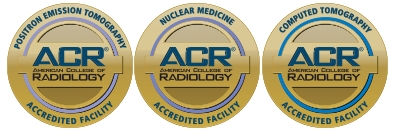Cardiac PET Imaging
Imaging Center
5795 Arville St. Suite 200 LV, NV. 89118
Featuring State of the Art Technology
- Non-Invasive
- Low Radiation
- Highly Accurate
- Board Certified Nuclear Cardiologists

Nevada Heart and Vascular Imaging Center is a unique, State of the Art Imaging Center dedicated to cardiac patients. We have the most advanced imaging technology to accurately diagnose heart disease. This is the only imaging center in Southern Nevada, owned and operated by a private cardiology group.
Start your road to heart health.
Welcome to Nevada Heart and Vascular Center.

About The CTA Scan
CTA stands for CT Angiography. This is a special kind of scan focusing particularly on the blood vessels. These images of the heart provide detailed pictures of the blood vessels that supply the heart muscle, also known as the coronary arteries. If these arteries are blocked, and left untreated, a heart attack can occur.
How Does It Work?
The coronary CT Angiogram takes images of the heart arteries that are clear enough to see the blockage. This CT can be used to evaluate a patient with chest pain or to clarify an uncertain stress test. It is also an excellent tool for assessing patients with symptoms of numerous other conditions, such as pulmonary emboli (blood clot in the lungs) and aortic aneurysm.
What Can The CTA Rule Out?
The CT Angiography is consistently able to rule out significant narrowing of the major coronary arteries, and can also non-invasively evaluate for plaque in the artery walls, that has not yet led to a serious blackage. The advance warning allows patients to seek the medical treatment and/or make the lifestyle changes that may prevent a heart attack in the future.
Using CTA to Diagnose Peripheral Arterial Disease (PAD) is revolutionizing the treatment of this disease.
Peripheral arterial disease (PAD) is generally associated with blocked arteries of the legs. The blockage most often is the result of a chronic buildup of hard fatty material into the inside lining of the arterial wall of the legs. This ultimately narrows and blocks the flow of blood which carries oxygen and nutrients to the limb. The femoral and popliteal arteries are the major arterial blood supply to the lower extremities and are a common location for atherosclerotic disease to develop.
Using the CTA to diagnose PAD allows your doctor to visualize blood flow through the lining of artery walls. This state of the art test provides your medical team with the ability to properly diagnose or rule out PAD non-invasively.
Moving beyond the angiogram:
An invasive angiogram requires a surgical setting, where a catheter is placed in your heart. This test is more invasive with associated complications. A CT Angiogram is non-invasive and safer.

About The PET Scan
PET stands for Positron Emission Tomography and is the most advanced, accurate, stress testing technology for visualizing blood flow through the heart arteries to the heart muscle. PET can be an alternative to invasive tests.
A cardiac PET scan is a type of stress test in which blood flow to the heart muscle is visualized with a radiotracer and a special scanner. PET provides an accurate, non-invasive assessment of the coronary arteries. Pictures are taken to determine if blood flow is restricted by narrowing of the coronary arteries.
How Is A PET Scan Different Then Other Tests?
Clinical studies have shown that PET scans are more accurate than other widely used nuclear stress tests. These other tests are associated with significant “false positive” results. False positives are results that show coronary heart disease where none really exists. False positives can lead to people undergoing unnecessary procedures. Because PET scans are so accurate, they are often used to confirm other tests if a false positive is suspected. False negatives can lead to an unexpected heart attack.
